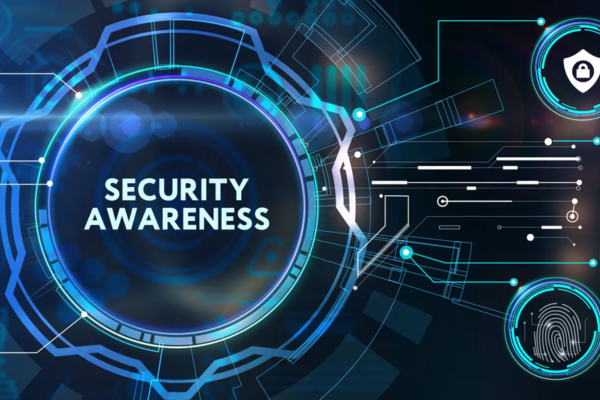10 Ways to Train Your Team on Cybersecurity Awareness
07 January 2025
6 Mins Read

toc impalement
Cybersecurity threats are everywhere. From phishing emails to ransomware attacks, businesses face risks that can disrupt operations and damage reputations. So, having cybersecurity awareness training in the workplace is inevitable. Your team is your first line of defense. Training them on cybersecurity awareness doesn’t have to be overwhelming. In fact, it can be straightforward and even engaging if done right. Ready to get started? Here’s how to make it happen.
A Complete Guide to Cybersecurity Awareness Training at Workplace
It’s difficult to get your employees onboard and make them learn the best practices of cybersecurity use. But you can start with the basics and run regular threat simulations to make it easier for them to adapt. Here are some practices you can follow –
1. Start With the Basics
Does your team understand what cybersecurity even means? Begin by covering the fundamentals. What is phishing? What does malware look like? Explain these terms in simple language, avoiding jargon that might confuse them. The goal here is to ensure everyone—from interns to senior staff—has a clear understanding of basic threats.

Tip: Company networks often face common types of cybersecurity threats. Companies can create topics around the common threats and the easiest ways of identifying them. Some good topics include phishing attacks, removable media, passwords and authentication, mobile device security, public wi-fi, and remote work cybersecurity. Remember that this is an introductory step. So, don’t get into the depth of the subjects.
2. Regularly Conduct Phishing Simulations
Ever wondered how prepared your team is for a real phishing attack? Simulated phishing exercises are a fantastic way to find out. These fake emails mimic real-life scams, teaching your team to recognize red flags like urgent language or unfamiliar links. It’s not about catching people out—it’s about helping them spot potential threats before they escalate.
Tip: you can start by creating very real-looking phishing attacks. It can be an email or a social media message with the tone of a phishing attack. If you are running these simulations frequently, it’ll be best to vary the level of difficulty to train your staff.
3. Create Clear, Actionable Policies
Do your employees know what steps to take if they suspect a security issue? If not, it’s time to create a straightforward cybersecurity policy.
Examples of Actionable Cybersecurity Policies:
- Two-Factor Authentication (2FA) – Require 2FA for all work accounts to add an extra layer of security beyond just passwords.
- Data Classification Guidelines – Define which information is sensitive and outline how employees should handle, store, or share it securely.
- Lock Devices When Unattended – Set a policy requiring employees to lock their screens or devices when stepping away from their desks.
- Email Security Measures – Train employees to verify sender addresses, avoid clicking unknown links, and report suspicious emails immediately.
- Software Updates and Patching – Clearly communicate the need to update devices and systems regularly, either automatically or through IT support.
- Use of Public Wi-Fi – Ban or restrict access to company systems over public Wi-Fi unless connected through a secure VPN.
- Incident Reporting Timeframes – Specify how quickly employees must report security incidents (e.g., within 30 minutes of detection).
- External Device Restrictions – Establish rules about plugging in external USB drives or using personal devices without IT approval.
- Social Media Security – Provide guidelines on what employees can post about the company to prevent oversharing sensitive details.
- Regular Password Audits – Implement company-wide password audits to ensure employees comply with strong password policies.
4. Make Cybersecurity Part of Onboarding
First impressions matter, right? Incorporate cybersecurity awareness training into your onboarding process so new employees understand its importance from day one. This could include a short video, an interactive workshop, or even a checklist of best practices. By setting expectations early, you’re building a culture where security is second nature.
Tip: HR at any organization can make it a criterion for hiring or showcase cybersecurity as the core value of the culture. A multi-step approach helps even novice candidates get the hang of basic security practices.
5. Use Gamification to Keep Training Fun

Nobody enjoys boring training sessions. So why not make it fun? Use gamification to turn learning into an engaging experience. Quizzes, challenges, or even a leaderboard for spotting phishing emails can make cybersecurity awareness training less of a chore and more of a team-building activity.
Tip: it’s often difficult to get all the team members on board with such experiments. So, the management can arrange for reward systems to make employees eager to participate.
6. Host Quarterly Refresher Sessions
Cybersecurity isn’t a “set it and forget it” situation. Threats evolve, and so should your training. Hosting quarterly sessions helps keep the information fresh. Use these opportunities to cover emerging threats, share examples of recent scams, or answer employee questions.
Tip: companies operating on the digital landscape must mandatorily schedule training timely throughout the year. A good way to do this would be by incorporating a four to six-month timeframe.
7. Highlight Real-World Consequences
While you want to keep the tone positive, it’s essential to stress the importance of vigilance. Share real-world examples of what can happen when businesses fall victim to attacks. For instance, a data breach could lead to financial loss, regulatory fines, or damaged customer trust. This isn’t about fear—it’s about understanding the stakes.
Tip: remember not to make it a process that gives employees a reason to worry and have anxiety. However, it helps to share real-world examples and have open discussions about them in the workplace to raise awareness.
8. Invest in Cybersecurity Tools
Here’s a question for you: does your team have the tools they need to succeed? Cybersecurity software like email filters, endpoint protection, and firewalls can make a huge difference. But don’t stop there—train your employees on how to use these tools effectively. A tool is only as strong as the person using it.
Tip: hold a training session in the workplace to help employees learn about the tools that safeguard the organization. It helps to hire someone from the company that offers these services. Also, always keep an open channel of communication for employees to resolve queries about cybersecurity tools at the workplace.
9. Encourage an Open Dialogue
Does your workplace culture support speaking up about potential risks? Employees should feel comfortable reporting suspicious activity without fear of judgment or reprimand. Foster an environment where questions are welcome and mistakes are treated as learning opportunities.
Tip: make it judgment-free. It’s ok to make mistakes at first. Not all your employees may be from an IT background. It’s impossible for them to know everything about the best practices. As long as they are eager, the organization will be on the right path toward protection.
10. Celebrate Success
How do you reinforce positive behavior? By celebrating it! Whether it’s a shout-out in a team meeting for spotting a phishing email or small rewards for completing training, recognizing your team’s efforts can go a long way. It shows that their contributions to cybersecurity are valued and appreciated.
Bringing It All Together
Cybersecurity awareness isn’t a one-and-done activity—it’s an ongoing commitment. But with the right strategies, you can empower your team to protect your business against ever-changing threats. Start small, build momentum, and remember every step you take strengthens your defenses. So, how will you begin?
Also read


















Comments Are Closed For This Article